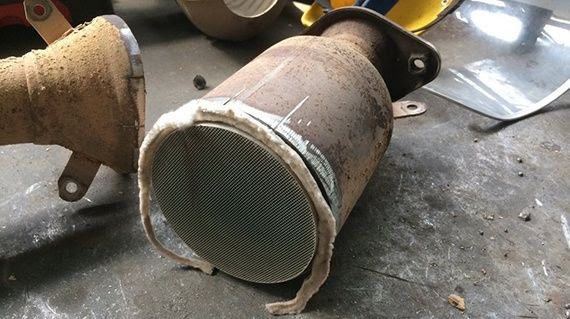A catalytic converter, like most car parts, has a useful life. On average, the part is designed for 60,000 to 90,000 miles of the run. However, being exposed to unfavorable operating conditions, the converter fails much earlier. In any case, an out-of-operation part can be profitably sold on the secondary market. For example, the following link will help to find gmc catalytic converter scrap price – https://autocatalystmarket.com/us/en/products/gmc, which is determined by the volume of noble platinum-group metals it contains.
Replacement of the catalytic converter results in serious financial costs. But with the correct operation of the vehicle, it is possible to significantly extend the performance of the exhaust gas converter. It is not uncommon for a part to serve much longer than its useful life designed by the manufacturer.
Causes of early failure of the catalytic converter
Despite the fact that catalytic converters are designed for more than 60,000 miles, many vehicle owners note that they do not reach the declared term and fail much earlier. This happens for the following reasons:
- regular refueling with low-quality fuel;
- use of leaded gasoline;
- frequent vibrations and driving on bad roads;
- a catalytic converter of poor quality;
- burnout of the catalytic layer;
- clogging of the converter channels;
- melting of the catalytic coating;
- ingress of oil into the fuel system;
- shocks and mechanical damage;
- frequent use of additives for the fuel system;
- problems and misfires in the ignition system.
Low-quality fuel
When refueling a car with low-quality fuel, an increased amount of soot is released during its combustion, which, over time, can accumulate on the walls of the catalyst honeycomb. This leads to a decrease in the pass-through capacity of the converter and its gradual failure.
Leaded gasoline is especially harmful to the catalytic converter. It contains a lot of lead, which covers the catalytic layer, and chemical reactions in the converter do not occur. Thus, the lambda probe reacts immediately and transmits a malfunction alert.
Ignition system malfunctions
If the fuel does not completely burn out in the engine cylinders, it burns out in the exhaust system. This heats up the catalytic converter above the permissible temperatures. As a result, the precious metal coating can melt. In this case, the part becomes completely unusable, and the system can block the engine from starting.
Unburned fuel sometimes detonates in the exhaust system. As a result, the ceramic catalyst block can be mechanically damaged.
Catalytic converters are located directly after the exhaust manifold so they are particularly sensitive to the operation of the ignition system.
Shock and vibration
Ceramic honeycombs are quite fragile. Frequent vibrations when driving on poor-quality roads lead to cracks and other defects.
Catalytic converters that are installed under the vehicle bottom after the inlet pipe are especially exposed to mechanical damage. Any impact of a curb or stone can damage the structure, as a result of which it will become completely out of operation.


